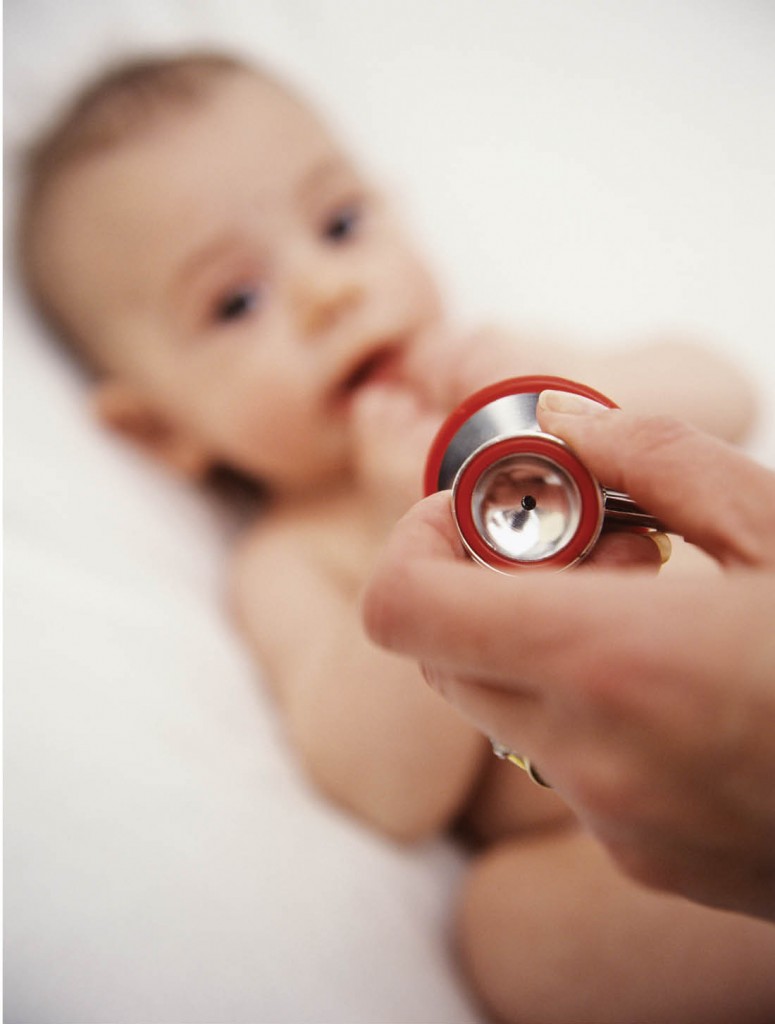Transplant Procedure Overcomes Blood-Type Incompatibility
More young children could receive life-saving heart transplants in the future, if a procedure performed for the first time at Vanderbilt becomes accepted practice. Pediatric cardiac surgeons at the Monroe Carell Jr. Children’s Hospital at Vanderbilt recently performed the state’s first ABO-incompatible heart transplant in a 2-month-old patient.
The procedure—reserved for children 2 years old and younger who have not yet developed significant levels of anti-ABO antibodies—helps a transplant recipient tolerate an organ from a donor whose blood type is incompatible.

When patients who have one blood type receive blood from someone with a different blood type, it may cause their immune systems to react. This is called ABO incompatibility. ABO-incompatible transplants are rare in the United States, mostly due to current donor and recipient matching algorithms. But pending changes to the United Network for Organ Sharing (UNOS) protocol are giving Vanderbilt physicians hope that the practice will become standard treatment.
In the past, children listed as ABO-incompatible for heart transplants were at the “bottom of the list” in terms of matching. But recent outcomes showing improved survival rates have sparked growing interest in the technique.
“We are the only center in the state doing ABO-incompatible heart transplants,” says Dr. Debra Dodd, associate professor of pediatrics and medical director of the Pediatric Heart Transplant program at Children’s Hospital. “Not every transplant center in the country will be able to perform this procedure. Our patients listed as ABO-incompatible will now have access to organs that previously were not available to them. They will have an improved chance, rather than dying while waiting.”
In 2006, UNOS agreed to allow incompatible organ listing for heart-transplant patients 6 months old and younger. A year later regulations changed to include candidates 2 years old and younger. Now discussions are underway to permit compatible and incompatible heart transplants to be listed equally.
“We are hoping it will happen in the coming year,” Dodd says. “Making this change will further shorten the waitlist time for this patient population as well as improve long-term survival. It will significantly impact the children who come to us for hearts.”
Once UNOS’ complex, computerized matching system finds a recipient for an organ, the medical team has a couple of hours to prepare the recipient for transplantation. But for incompatible organs, a few extra steps are required for a successful outcome.
“This procedure, which is done in the operating room, allows us to modulate the immune system of our patients to allow them to tolerate a transplant from a donor whose blood type is incompatible,” says Dr. Bret Mettler, assistant professor of cardiac surgery. “At the time of their operation, we do an exchange transfusion—which means we replace all their native blood volume with blood from our blood bank, minimizing the immunologic response to the transplanted heart causing hyperacute rejection.”
Mettler says the medical team checks the antibodies in the blood before re-perfusing the organ once transplantation is complete to ensure that the levels are low enough to prevent rejection. If the levels are too high, another exchange is done. “With an exchange transfusion and an immature patient’s immune system, as they age they will develop tolerance of the organ that is from a different blood type,” he explains. “The long-term outcomes are equivalent to patients who have received ABO-compatible transplantation.”
For nearly two decades, Canada and some European countries have been performing pediatric ABO-incompatible heart transplants. Dodd said those countries’ high mortality rates while waiting for donors prompted them to seek alternative treatment options.
Since pioneering the incompatible transplant, Canada has seen a dramatic decrease in transplant mortality rates: from 58 percent down to 7 percent. Dodd anticipates similar improvements for both Vanderbilt and other eligible centers nationwide as the practice becomes standard.
The pending UNOS change in criteria also could result in a 20 percent increase in heart transplant volume at Vanderbilt, as few centers in the Southeast perform ABO-incompatible heart transplants. In fact, fewer than 20 facilities offer the procedure nationwide.
“This is a testament to multiple disciplines collaborating within Vanderbilt,” says Mettler. “To be able to perform an equally complex medical and surgical procedure in the most fragile population very early in life is very satisfying. Many areas within the hospital come together to make this work. We hope that being able to offer ABO-incompatible transplants leads to fewer children dying while waiting for an acceptable organ.”